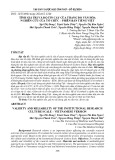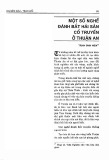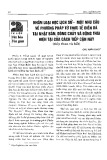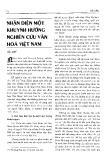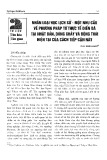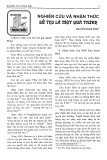
H
OW TO
U
SE
Y
OUR
P
ROCESS
S
KILLS TO
P
REVENT AND
S
OLVE
C
OMMUNICATION
P
ROBLEMS
was expanding rapidly, naturally it was more difficult to stay united.
More structure was now required.
These same phenomena can occur on a department or team level as
well. Often managers are surprised by communication problems that
erupt as growth occurs. One seminar participant said, ‘‘When our group
was smaller, we just knew what the other person needed and when and
we provided it. And vice versa. Things just flowed. Now we have a lot of
new people and they don’t get it. They don’t know how we get things
done.’’ For better or for worse, the more the growth, the more the need
for structure to solidify communication and thus reach the objectives.
New people do not have the background or intuition to know what the
team needs and how people previously operated together. They do not
have the history of relationship nor the informal process that took place.
Defining Terms
Here are definitions of the terms workflow process and project manage-
ment as they are used in this chapter. After this brief description, later
sections provide more detailed explanations.
Workflow process is a series of interdependent steps that have a logi-
cal sequence from beginning to end and produce a result. The steps are
best documented to make them repeatable and consistent for all em-
ployees. They are semipermanent and repeatable.
Project management organizes one particular project. There are also
steps that must be followed. PM specifies who will do what by when and
then tracks the progress for one particular project.
Example of Workflow Process
One example of process is the sales process. This process is similar from
company to company although there may be minor differences. Chuck
Carroll, a former sales executive, says, ‘‘A sales process is a set of sequen-
tial tasks to provide a product or service to a client in exchange for
72—

W
ORKFLOW
M
ANAGEMENT
:C
OMMUNICATION
T
OOLS
money. Sales is getting the prospective customer happily involved with
the benefits of owning and using the product or service.’’
Chuck adds: ‘‘From the first time a potential customer hears about
your product or service until long after buying, you want him to have no
surprises. Consistency in message before you talk to the client, through-
out the sales conversations, and postsale is critical. You want a sales
process that continues to support the client, makes them happy—
Nirvana. It doesn’t happen by accident. You have to figure it all out
ahead of time and follow the steps of the sales process.’’
Here are the steps of a typical sales process:
1. Presales
2. Initial contact
3. Agreement on how the customer’s buying process and the salesper-
son’s selling process will dovetail
4. Definition of value
5. Demonstration—proof of the value
6. Agreement to buy and negotiation of the contract
7. Postsale implementation of product and customer service
Within each of the process steps, there is flexibility for how to achieve
that step. This may vary from company to company or even from indi-
vidual to individual. The manager must decide how much flexibility to
delegate. Can you let the direct report decide how to accomplish each
step? Or do you need to direct her on the how? How much authority are
you delegating for each step?
Project Management Overview
Project management includes identifying project stages in the devel-
opment cycle, estimating how long tasks typically take, and initiating a
formal scheduling system that can easily be modified as multiple proj-
ects are managed across departments or functions. The system should
—73

H
OW TO
U
SE
Y
OUR
P
ROCESS
S
KILLS TO
P
REVENT AND
S
OLVE
C
OMMUNICATION
P
ROBLEMS
have the capability to track accountability for meeting task deadlines.
Accountability develops people and clarifies who is responsible for what.
Benefits of Project Management
So what are the benefits of using project management? It reinforces
communication about who is responsible for what, when, and with
whom they interface. This planning from the beginning to the end im-
proves productivity, reduces redundancy, and minimizes rework. Project
management shows the interrelationship of tasks, drives project sched-
ules, and eases oversight of budget, risk, and quality. Project manage-
ment decreases stress and miscommunications because all concerned
have the same expectations and information about progress and/or de-
lays. Let’s look at a situation that could gain from formal project man-
agement.
One growing company faced the challenge of moving most of its
manufacturing overseas, remote from the staff. This arm’s-length manu-
facturing created major challenges and was a critical issue the company
had to address. Almost 90 percent of its top products were now produced
in Asia instead of the United States. This impacted every corporate func-
tion and required special attention from each function. The company
now needed to bridge communications among finance, purchasing, en-
gineering, product development, sales, and quality control with more
structure, including formal project management.
When a company requires increased attention from every depart-
ment, this calls for a new way to manage the interactions among the
groups. Formal project management generally replaces informal project
flow as organizations expand.
Another stimulant to implementing formal project management is
expansion of product or service menus. In response to increased product
demand and competition, a company concurrently upped the array of
new products it developed and manufactured. This proliferation of new
product types upset many employees because of their swelling work-
74—

W
ORKFLOW
M
ANAGEMENT
:C
OMMUNICATION
T
OOLS
loads. Management needed to tackle new project and personnel realities
due to these unintended consequences.
Some companies formalize project management to shorten pro-
duct development from original definition to market. This helps new
product team members know how long particular tasks in the product-
development cycle should take. It is easier to estimate and track the re-
quired person-hours for each task. This means timelines and schedules
that coordinate with multiple functions can be accurately developed and
communicated with minimal confusion.
Formal project management limits impromptu decisions being
made with inadequate information or consultation. Project management
drives decision makers to gather enough specifics, from all people af-
fected, to take appropriate action. When the determined action is well
thought out, it avoids rework and employee frustration with ever-
changing directives.
Project management also prioritizes tasks so that individuals are not
left to set their own priorities. Communicating priorities keeps employ-
ees safe and productive as they work on important tasks. Employees can
also be confident that there are formal dates for project milestones and
overall deadlines. This eliminates blaming and miscommunication that
can occur when dates are informal or unwritten.
Management Workflow Processes
It is easy to see that process and project management ease communica-
tion for tasks and projects. Managers also need to set up ways to ease
communication with and among their direct reports. You need to create
management processes so that you can get work done with and through
other people. These processes help your staff know what you expect.
They also routinize communication so that everyone can depend on reg-
ular information exchange. Two important management processes are
meetings and status reports.
—75

H
OW TO
U
SE
Y
OUR
P
ROCESS
S
KILLS TO
P
REVENT AND
S
OLVE
C
OMMUNICATION
P
ROBLEMS
Using Meetings to Optimize Communication
Well-structured meetings are recognized as a productive use of time.
They can enhance understanding of responsibilities and build relation-
ships. They can save time in the long run if people are clear on roles and
level of authority as well as due dates. Here are some tips to increase
communication during meetings you control:
>Weekly status/progress meetings, consistently done, contribute to
two-way communication and benefit both direct report and man-
ager. One purpose is to update the manager on progress made
toward objectives, problems and how they are being fielded, and the
employee’s plan for the next week. This weekly checkpoint provides
an opportunity for positive and redirective feedback and thus keeps
the work on track. When the manager and employee talk weekly
about the work, they are more likely to stay in sync and avoid sur-
prising each other. Weekly meetings also improve time management
because the employee and manager can save up nonurgent ques-
tions and reports until the meeting rather than constantly interrupt-
ing each other.
Another purpose of a weekly meeting is that employees have reg-
ular access to their manager to build a relationship, gain clarification
on expectations, and get needed resources. The employee can work
independently between meetings and not be micromanaged be-
cause the manager is regularly kept informed.
>For project, product, or business strategy meetings, decide who
should attend meetings to enhance cross-functional communica-
tion. Ensure that invitees are included by functions that need to be
there, since staff time spent in meetings is expensive. Be sure all
invitees know in advance what they are expected to contribute.
>Train and coach people to actively participate in meetings. Attendees
should be held accountable for contributing information about their
functions. Coach the person who remains silent in meetings and
then complains later or waits until problems emerge. Sometimes
these people are trying to avoid conflict. Help them learn how to
address concerns as a business issue during the meeting to prevent
larger conflicts and problems with others later on.
>Some individual contributors may have been raised in a culture that
taught them not to express their opinion if more senior people, or
76—



